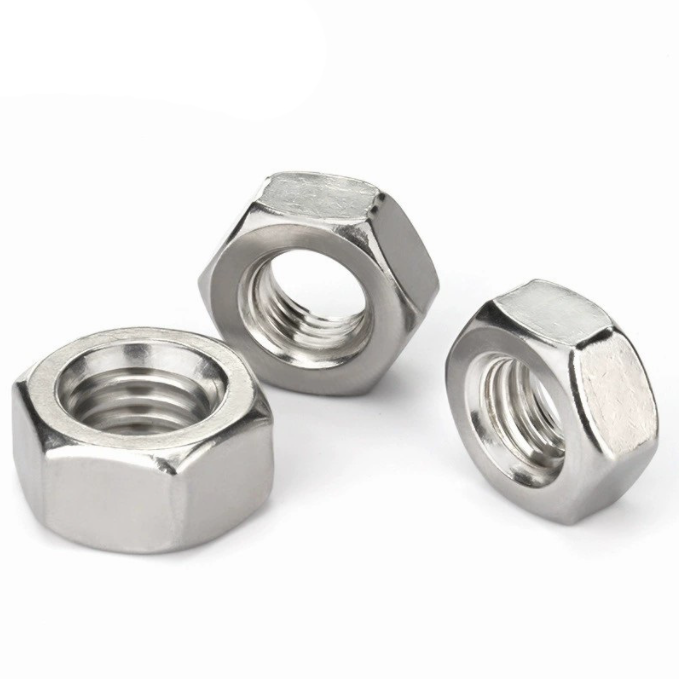

m5 flange nut
Dec . 22, 2024 17:42 Back to list
m5 flange nut
The M5 Flange Nut A Comprehensive Guide
In the world of fasteners, the M5 flange nut stands out as an essential component in various industries, from automotive to electronics. Understanding its design, functionality, and applications can provide insight not just into its utility, but also the engineering principles that govern modern manufacturing practices.
What is an M5 Flange Nut?
The M5 flange nut is a type of nut that has a built-in flange at the bottom. The M designation signifies that it is a metric nut, where 5 refers to the nominal diameter of the screw it is designed to fit — in this case, 5 millimeters. The flange serves multiple purposes it provides a larger bearing surface to distribute load and helps prevent damage to the surface underneath the nut. This design feature makes it particularly useful in situations where the material being fastened is prone to deformation or damage from standard nuts.
Design and Materials
M5 flange nuts are generally made from a variety of materials, including steel, stainless steel, brass, and nylon. Each material offers different properties suited for specific environments. For example, stainless steel variants are corrosion-resistant and suitable for outdoor use or in damp environments, while nylon versions may be used where electrical insulation is necessary. The nut’s design may also include a serrated or textured face that enhances friction, providing a more secure fit.
Functionality
The primary function of an M5 flange nut is to secure components together, offering a stable and reliable connection. The flange helps to distribute the load applied during fastening, reducing stress concentrations that could lead to failure. This makes the M5 flange nut especially effective in applications where vibration or dynamic loads are present, as it helps maintain the integrity of the assembly over time.
Moreover, when used with a compatible bolt or screw, the flange nut’s structural design prevents it from loosening due to movement or vibrations, making it an ideal choice in machinery and automotive applications.
Applications
m5 flange nut

M5 flange nuts are versatile and widely used across various sectors
1. Automotive Industry Used extensively to secure parts such as engine mounts, transmission components, and body panels, flange nuts’ reliability is crucial for vehicle safety.
2. Electronics In equipment like circuit boards and housing, M5 flange nuts provide reliable fastening without the risk of damaging sensitive components.
3. Construction and Manufacturing Flange nuts are often employed in assembling machinery, where they can accommodate heavier loads and withstand operational stresses.
4. Furniture Assembly With their wide bearing surface, flange nuts are also used in the assembly of furniture, providing stability without damaging the material.
5. Sports Equipment Many sports devices, such as exercise machines, rely on flange nuts for secure attachments and safety.
Installation and Maintenance
Installing an M5 flange nut is relatively straightforward. It involves pairing it with a compatible M5 bolt and tightening it to the manufacturer’s specifications to ensure optimal performance. It is essential to monitor the fastening periodically, especially in high-vibration applications, to ensure tightness and prevent loosening.
Conclusion
The M5 flange nut is a small yet crucial component of modern engineering and manufacturing. Its design not only enhances the reliability of connections but also protects the integrity of the materials being fastened. As industries continue to evolve, the versatility and functionality of the M5 flange nut will undoubtedly keep it relevant for years to come. Understanding its properties and applications will help engineers and technicians make informed choices in their fastener selections, ultimately leading to safer and more efficient designs.
Latest news
-
High-Strength Hot-Dip Galvanized Bolts-Hebei Longze|Corrosion Resistance&High Strength
NewsJul.30,2025
-
Hot Dip Galvanized Bolts-Hebei Longze|Corrosion Resistance&High Strength
NewsJul.30,2025
-
Hot Dip Galvanized Bolts - Hebei Longze | Corrosion Resistance, High Strength
NewsJul.30,2025
-
High-Strength Hot Dip Galvanized Bolts-Hebei Longze|Corrosion Resistance, Grade 8.8
NewsJul.30,2025
-
Hot Dip Galvanized Bolts-Hebei Longze|Corrosion Resistance,High Strength
NewsJul.29,2025
-
High-Strength Hot Dip Galvanized Bolts - Hebei Longze Metal Products Manufacturing Co., Ltd.|corrosion resistance&high strength
NewsJul.29,2025

